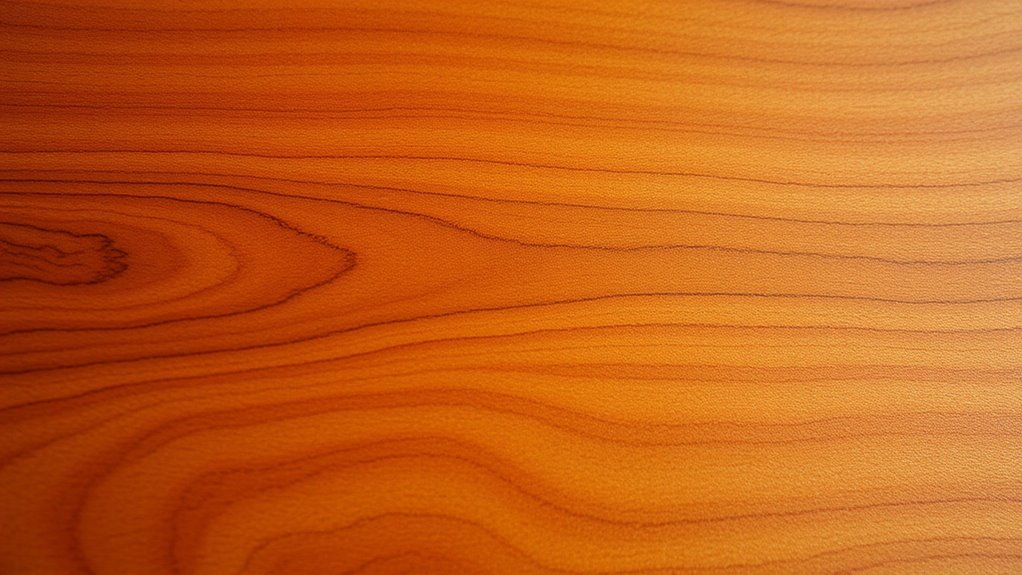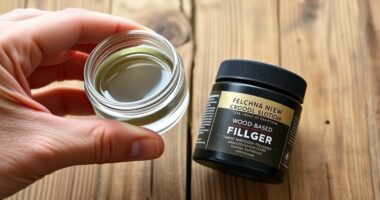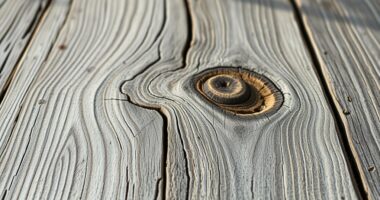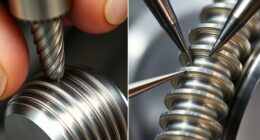Veneer wood is a thin layer of natural or engineered wood applied to furniture and surfaces to create a beautiful finish with less material and cost than solid wood. It typically uses layers less than 3mm thick, glued onto a supportive substrate. Veneers come in various types, including natural, engineered, and exotic, offering durability, flexibility, and a luxurious look. To discover how veneer can enhance your projects, keep exploring its composition and many versatile uses.
Key Takeaways
- Veneer wood is a thin layer of real or engineered wood used to cover surfaces, typically less than 3mm thick.
- It consists of a decorative veneer layer bonded to a supportive substrate for strength and stability.
- Made by slicing logs into ultra-thin sheets using rotary or other cutting methods.
- Commonly applied in furniture, cabinetry, and interior wall panels for aesthetic and cost-effective enhancement.
- Veneer offers natural wood appearance, flexibility for curved surfaces, and sustainable material usage.
The Origin and Historical Significance of Veneer
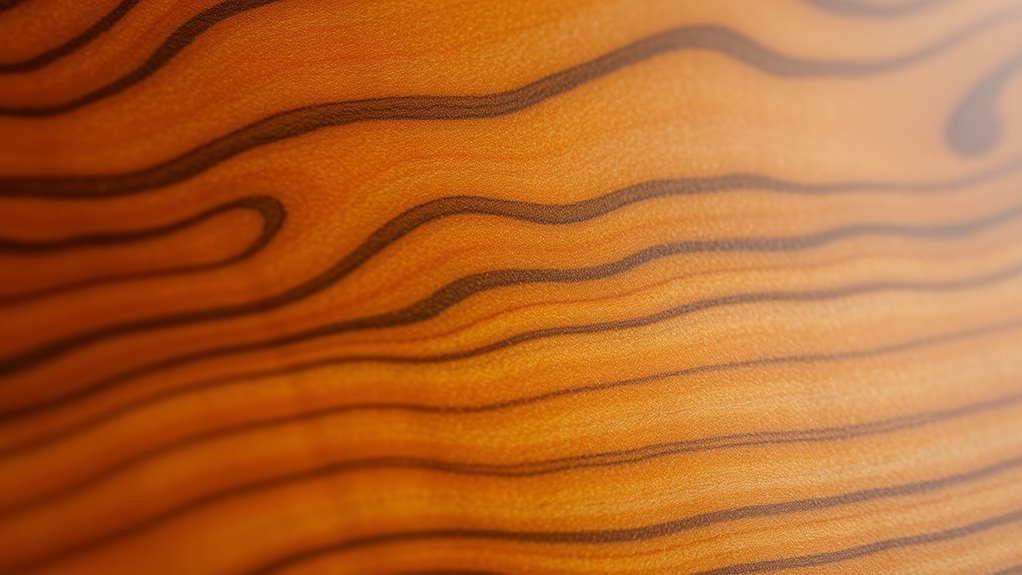
Veneer has a rich history that dates back over 3,000 years, beginning in ancient Egypt. You can see how early artisans used wood to create decorative surfaces by applying thin slices of logs onto furniture and coffins. This technique, known as veneering, allowed craftsmen to showcase the natural beauty of rare and expensive woods while conserving materials. Throughout history, veneering became a mark of craftsmanship, with civilizations like the Romans adopting and refining the technique for mass-produced furniture. By using these thin slices, artisans could produce luxurious-looking surfaces without using entire logs. The historical significance of veneering lies in its ability to blend artistry with practicality, evolving over millennia to become an essential decorative craft still valued today. Additionally, advancements in veneer technology have expanded its applications, making it easier to achieve intricate designs and durable surfaces, and allowing for greater design versatility in modern furniture and architectural projects. The development of modern adhesives and tools has further enhanced the precision and quality of veneering techniques. Moreover, veneering methods continue to push the boundaries of what can be achieved with this ancient craft. For example, innovations in composite materials have introduced new possibilities for lightweight and resilient veneer surfaces.
How Wood Veneer Is Manufactured
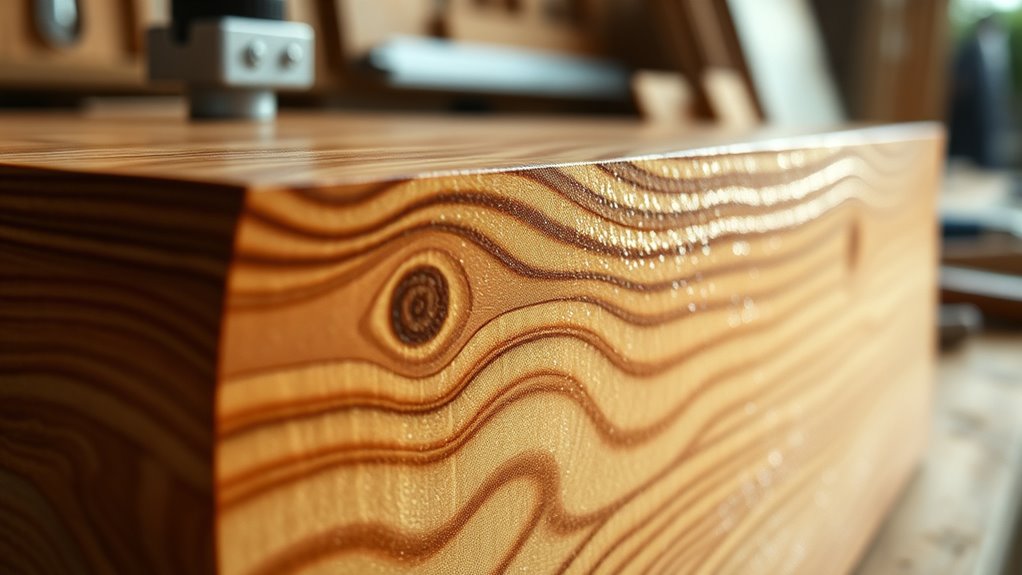
To create the thin sheets used in veneering, logs undergo a specialized manufacturing process that transforms solid wood into delicate, decorative layers. During veneering, the production process involves cutting logs into ultra-thin sheets, typically between 1/64 inch and 1/8 inch thick. One common method is rotary cut, where the log is spun on a lathe to peel off continuous, concentric layers that resemble a roll of paper, highlighting distinctive grain patterns. Alternatively, slicing methods like plain slicing, quarter slicing, or rift slicing produce sheets with different grain appearances, often called crown cut. Before cutting, logs are soaked in hot water to soften fibers, making it easier to produce consistent veneer sheets. This process allows for beautiful, versatile veneer layers used in various decorative applications. The manufacturing process involves precise techniques that ensure the quality and appearance of the veneer. Additionally, understanding the types of veneer cut can help in selecting the best appearance for specific projects. Proper wood selection is essential to achieve the desired aesthetic and durability in finished furniture, and selecting the right veneer type can also influence its performance and longevity. To further improve the quality of veneer sheets, manufacturers often employ advanced cutting technology to enhance precision and consistency.
Different Types of Veneers and Their Characteristics
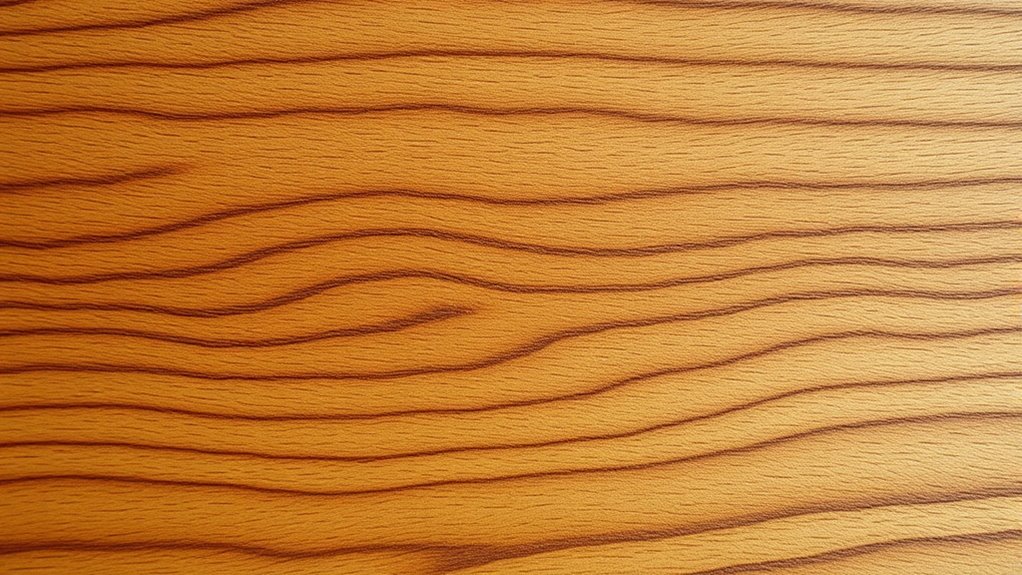
Have you ever wondered how different types of veneers suit various projects? Veneers come in several forms, each with unique characteristics. Natural wood veneers are sliced from logs using methods like rotary cutting, plain slicing, or quarter slicing, creating distinct grain patterns. Engineered wood veneers are made from laminated layers of dyed or processed fast-growing tropical woods, mimicking exotic species. Backed veneer features reinforcement with materials like paper or foil, enhancing flexibility and durability. The choice depends on application needs, aesthetic preferences, and moisture resistance. Additionally, the veneer’s grain pattern can significantly influence the overall look of the finished piece. It is also important to consider the cost and availability when selecting the appropriate veneer type for your project. Furthermore, understanding the manufacturing process can help in choosing the right veneer for specific applications. For instance, the moisture resistance of different veneer types can impact their suitability for various environments. Here’s a quick overview: Veneer Types
| Type of Veneer | Composition | Best For |
|---|---|---|
| Natural wood | Sliced from logs, various slicing methods | High-end furniture |
| Engineered veneer | Laminated layered wood, dyed | Cost-effective projects |
| Backed veneer | Reinforced with supportive materials | Flexible applications |
| Exotic veneer | Rare or exotic wood species | Luxury designs |
| Commercial veneer | Lower grade, more flaws | Budget-friendly options |
Common Applications of Veneer in Furniture and Interiors

Veneer is often used to enhance furniture and interior surfaces with a beautiful, high-quality look. It works well on curved and large areas, allowing for seamless, natural finishes. You’ll find it in everything from cabinet doors to wall coverings, adding elegance and style. Additionally, veneer can be crafted from various materials, including recycled products, promoting sustainability in interior design. Its application aligns well with the eco-friendly trends seen in modern farmhouse decor, where sustainable materials are increasingly valued. Using veneer made from reclaimed wood also demonstrates a commitment to environmentally responsible practices. Incorporating veneer with cybersecurity considerations ensures the longevity and integrity of valuable interior assets. Engaging with sustainable veneers supports holistic development by combining environmental consciousness with aesthetic appeal.
Decorative Surface Enhancement
Decorative surface enhancement is a primary reason why veneer is popular in furniture and interior design. It allows you to create striking surfaces that showcase the natural wood grain, adding warmth and visual interest. Veneer application on wood veneer faces transforms plain surfaces into luxurious finishes, making pieces look high-end without the weight or cost of solid wood. You can use veneer for surface enhancement on doors, tabletops, and wall panels, achieving a refined look. Finishing techniques such as dyeing, wire brushing, or texturing further enhance the decorative appeal, giving each piece a unique character. The flexibility of veneer means you can incorporate intricate patterns or subtle textures, elevating the aesthetic quality of furniture and interiors with a natural yet sophisticated appearance.
Curved and Large Areas
Did you know that the thinness and flexibility of veneer make it perfectly suited for covering curved and large surfaces? Its pliability allows it to conform seamlessly to complex shapes without cracking. This makes veneer ideal for applications like:
- Wrapping curved surfaces on furniture, such as rounded cabinet edges or decorative arches.
- Covering large panels in architectural interiors, including wall panels and ceiling treatments.
- Creating continuous grain patterns across irregularly shaped surfaces for a polished look.
- Utilizing space-efficient materials like veneer to optimize design and functionality in home interiors. Additionally, advances in machine learning algorithms are enabling more precise manufacturing processes for veneer production, ensuring higher quality and consistency.
Thanks to the thin profile, you need less material and can apply it smoothly over expansive areas. Modern adhesives ensure the veneer stays securely bonded, providing durability and stability for long-lasting, aesthetically pleasing results. Moreover, understanding material properties of veneer helps in selecting the right type for specific applications, enhancing both performance and appearance.
Advantages of Using Wood Veneer Over Solid Wood
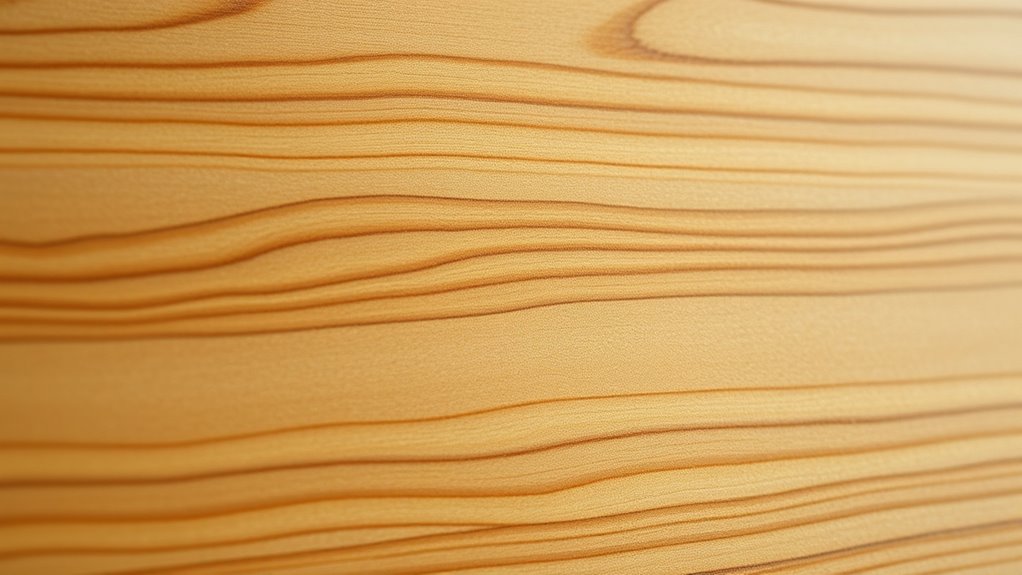
Using wood veneer can save you money and reduce waste since it uses much less raw material than solid wood. It also lets you create curved or complex designs that are hard to achieve with solid pieces, expanding your options. Plus, veneer makes it possible to enjoy the beauty of rare woods without the high cost, making your projects more sustainable and versatile. Additionally, understanding different types of veneer can help you select the best option for your specific needs and aesthetic preferences.
Cost-Effective Material Choice
Wood veneer offers a cost-effective alternative to solid wood by allowing you to achieve the appearance of expensive hardwoods on large surfaces without the high price tag. Using veneer, you get to maximize the surface area from each log, thanks to the thinness of wood veneer sheets—sometimes as little as 0.64mm—reducing waste and lowering costs. This means you can enjoy high-end aesthetics without spending a fortune on expensive wood. Here’s how it benefits you: 1. Access to luxurious, exotic wood grains at a fraction of the cost. 2. Significant savings by using less natural wood and reducing waste. 3. Versatility in creating curved or complex designs without the expense of solid wood shapes. With veneer, you achieve the look of expensive wood while staying within budget, making it a smart, economical choice. Additionally, the ability to utilize vetted appliances labs ensures you select high-quality veneers and related products for your projects.
Sustainable Resource Utilization
By choosing wood veneer, you considerably reduce the amount of raw material needed for your projects, as a single log can produce up to 40 times more surface area than a solid wood board of the same thickness. This promotes sustainable resource utilization by maximizing the use of each tree and minimizing waste. Wood veneer allows you to use high-quality wood more efficiently, reducing overall raw material consumption and supporting environmentally friendly practices. It also encourages the use of diverse wood species, including fast-growing tropical varieties, which helps preserve natural forests and biodiversity. Overall, opting for veneer-based products helps lower deforestation impacts, conserves finite hardwood resources, and promotes sustainable plantation management.
Versatile Design Options
One of the key advantages of wood veneer is its ability to offer intricate grain matching and seamless patterns, which substantially enhance the visual appeal compared to solid wood. This allows you to create a decorative wood veneer face with consistent, flowing patterns. With design flexibility, you can craft curved surfaces and unique shapes that are tough with solid wood. Using wood sliced into thin sheets enables a variety of options, including:
- Matching complex wood grain patterns for a cohesive look
- Incorporating diverse wood species and finishes for customized aesthetics
- Designing lightweight furniture and panels that are easier to handle and install
These features make veneer a versatile choice, opening up creative possibilities that solid wood simply can’t match.
Factors to Consider When Selecting Veneer
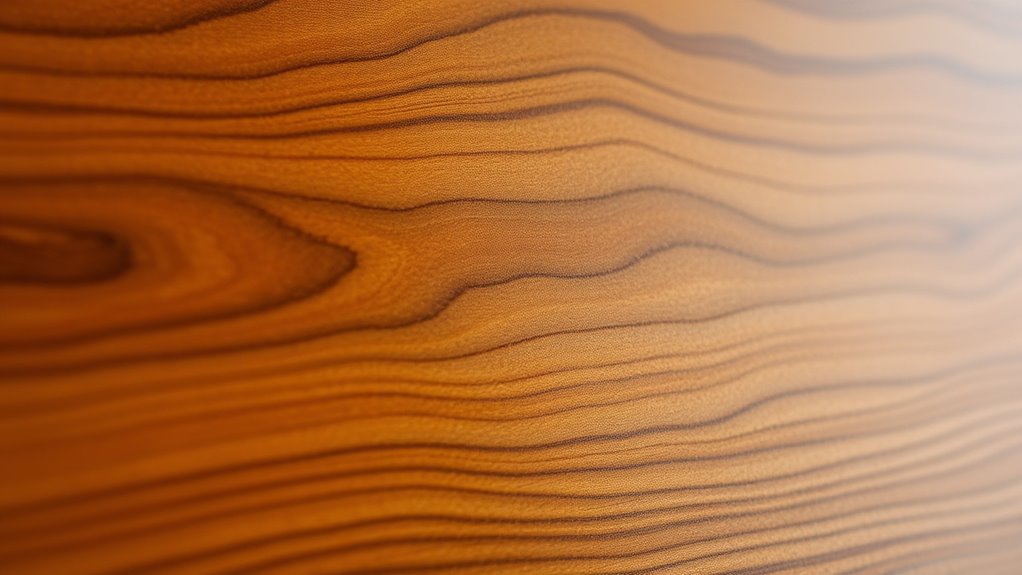
Choosing the right veneer involves evaluating several key factors to guarantee it meets your project’s needs. First, consider the veneer grade—AA offers the highest quality with minimal flaws, while C is more affordable but may have more imperfections. Match the wood species and grain pattern to your desired aesthetic, ensuring consistency in color and texture. Examine the backing material, such as paper-backed or phenolic-backed, to determine flexibility and durability, especially if you’re working on curved or moist surfaces. Assess the surface quality to ensure it aligns with your finish expectations. Finally, factor in environmental conditions like humidity, water exposure, and sunlight; select water-resistant or UV-treated veneers accordingly. These considerations will help you choose the best veneer for your project.
Challenges and Limitations of Veneer Products
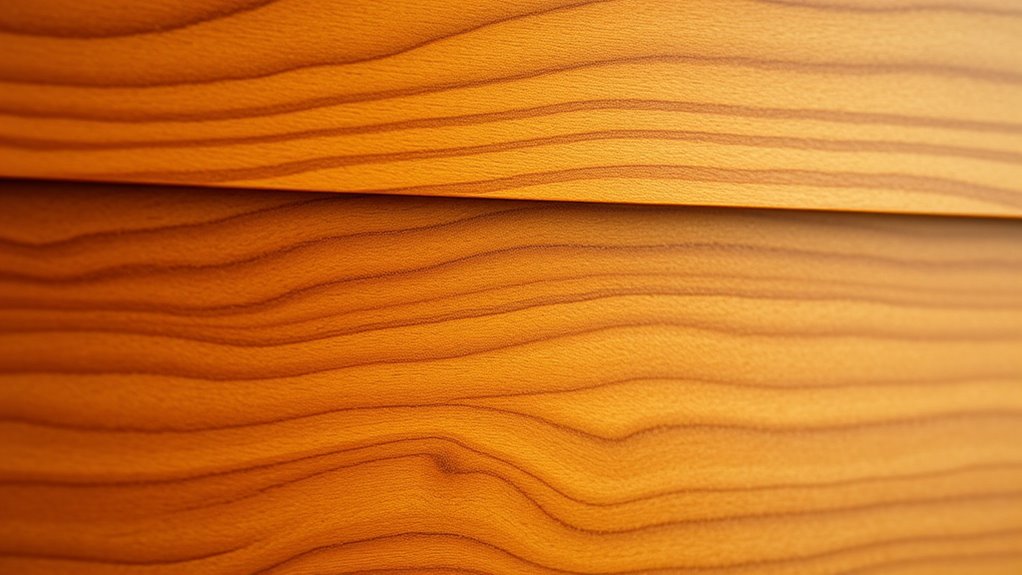
While selecting the right veneer is important, it’s equally essential to understand its inherent challenges and limitations. First, water damage is a common issue, causing peeling or bubbling if not properly sealed, especially in humid environments. Second, when veneer gets damaged, repair options are limited; thin layers make fixing cracks or chips difficult, often requiring full replacement. Third, improper application can lead to visible seams, uneven surfaces, or edges lifting. High humidity and temperature fluctuations can cause delamination or warping over time. Additionally, cracks and chips may develop with heavy use or exposure to moisture. These challenges highlight the need for careful handling during installation and maintenance to ensure veneer’s durability and aesthetic appeal in your project.
Sustainable and Eco-Friendly Aspects of Veneer Use
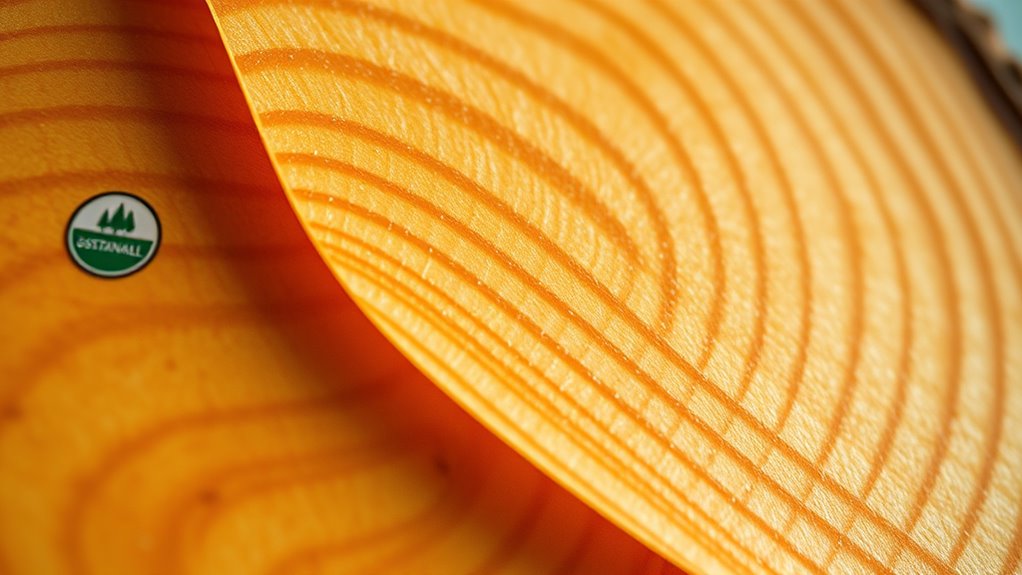
Veneer wood stands out as a sustainable and eco-friendly option because it maximizes resource efficiency and reduces environmental impact. By producing roughly 40 times more surface area from a single thin sheet, veneer minimizes the need to harvest large quantities of solid wood. This helps conserve endangered native forests and promotes sustainable forestry practices. Using fast-growing plantation-grown tropical woods and engineered veneers further decreases pressure on slow-growing native trees. Additionally, veneer production generates less waste, as slices can come from logs that might otherwise be discarded. Eco-friendly veneer options often carry certifications like FSC or PEFC, ensuring responsible sourcing and sustainable management of forest resources. Overall, choosing veneer supports environmentally conscious choices that protect forest ecosystems while delivering beautiful, durable surfaces.
Tips for Proper Care and Maintenance of Veneered Surfaces
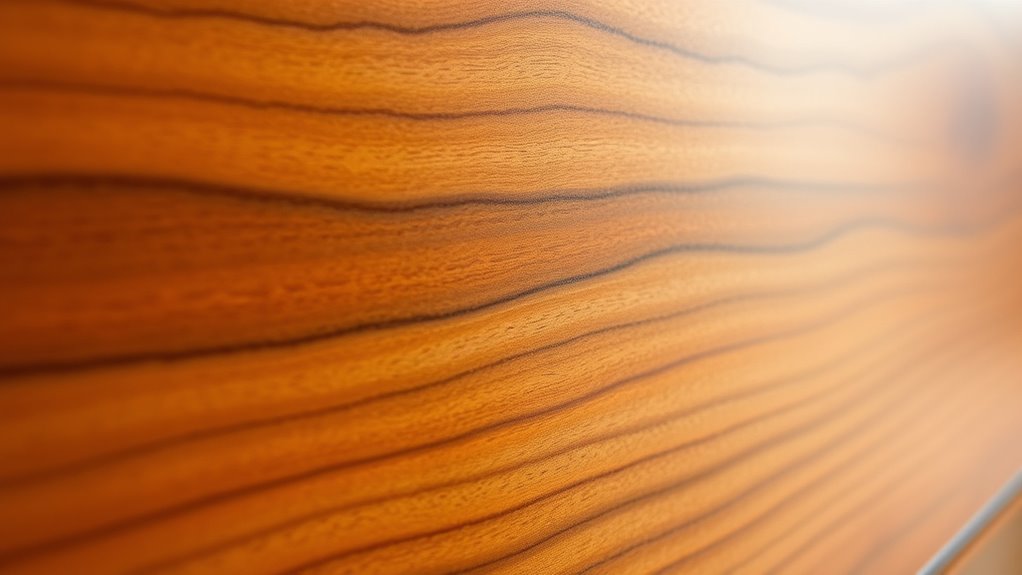
Proper care and maintenance are essential to keep veneered surfaces looking their best and lasting longer. To prevent damage, follow these tips:
- Regularly dust your veneered surfaces with a soft, damp cloth to keep dust accumulation at bay and avoid scratches.
- Use gentle, non-abrasive cleaners designed for wood furniture to protect the veneer’s protective layer from damage.
- Keep your furniture away from direct sunlight and excessive moisture, which can cause the veneer to swell, peel, or fade.
Additionally, use coasters, pads, or felt protectors under objects to prevent scratches and dents. Avoid water contact to preserve the integrity of the veneer and maintain its appearance. Proper care guarantees your veneered surfaces stay beautiful and durable over time.
Frequently Asked Questions
What Is the Composition of Wood Veneer?
You want to know what makes up wood veneer. It’s made of super thin slices of wood, usually between 1/64 and 1/8 inch thick, sliced or peeled from logs. These slices are glued onto substrates like plywood, MDF, or particleboard. The veneer can be natural, engineered, or reinforced, letting you enjoy the look of real wood while using less expensive or rare materials efficiently.
What Is a Wood Veneer and What Is It Used For?
Think of wood veneer as a delicate skin wrapping a sturdy core, revealing nature’s beauty in thin slices. You use it to add authentic wood grain to furniture, cabinets, or walls without the high cost or weight of solid wood. By applying these thin sheets onto different surfaces, you create elegant, durable finishes that highlight natural patterns, giving your projects a rich, sophisticated look while conserving valuable resources.
What Is the Disadvantage of Veneer Wood?
You should know that veneer wood has some disadvantages. It’s highly susceptible to water damage if you don’t seal it properly, which can cause peeling or warping. It also cracks or chips over time due to temperature and humidity changes. Repairing veneer is tricky—you often need to replace entire sections. Plus, rough handling or impacts can lift or peel the thin veneer, reducing its lifespan.
Which Is Better, Laminate or Veneer?
When choosing between laminate and veneer, it depends on your priorities. If you want a natural, high-end look with authentic grain patterns and the ability to refinish, veneer is better. However, if you need durability, resistance to scratches, heat, and moisture, laminate is more practical. Consider your environment and aesthetic preferences to decide which material suits your needs best.
Should I Avoid Veneer Furniture?
You might want to avoid veneer furniture if you’re looking for durability and long-term quality. Veneer can peel, chip, or warp over time, especially if not maintained properly or exposed to moisture and sunlight. Repairs are costly and difficult, and lower-quality options may have harmful chemicals. If you choose veneer, buy from reputable sources and handle it carefully to maximize its lifespan.
Conclusion
Understanding veneer wood helps you appreciate its beauty and versatility. Did you know that veneer can reduce wood waste by up to 70%, making it an eco-friendly choice? By choosing veneer, you’re not only enhancing your space with stunning designs but also contributing to sustainable practices. With proper care, your veneer surfaces can last for decades, proving that beauty and durability can go hand in hand. Make informed choices and enjoy the timeless appeal of veneer in your home.
